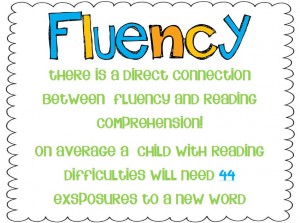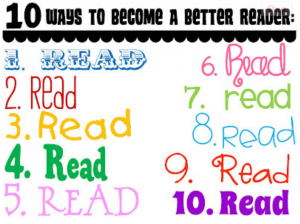We are smack in the middle of double-digit addition, and it is proving to be very difficult for those who do not have their math facts memorized. Next week we’ll be starting double-![image_thumb[10]](http://qacblogs.org/megan.dunmeyer/files/2017/02/image_thumb10-300x123.png) digit subtraction, which seems to be doubly difficult when math facts are not memorized!
digit subtraction, which seems to be doubly difficult when math facts are not memorized!
If you find that your child doesn’t know his/her math facts, please work with him/her at home to achieve memorization. We are not at a point in the year where we can continue going back to re-teaching memorization strategies during class – we have much, much more to learn!
You may choose to memorize math facts as your “math activity” practice for the upcoming weeks of homework. Please utilize the following links to create flashcards and work on memorization of facts up to 20:
 reading fluency.
reading fluency.
Here are some answers:
1. At what rate should my child be reading for this point in the school year?
At this point in the school year, your child should be able to read about 70 Words Per Minute (WPM), accurately, according to several sources, including the Reading A-Z guidelines. Some guidelines recommend only 53 WPM for first grade and others recommend as high as 82 WPM by the end of first grade, but in my experience, if your child reads at or above 70 WPM, he or she will likely do well on the final DIBELS test of the year.
2. But isn’t it just as important for my child to comprehend his/her reading?
Yes, of course it is! Reading comprehension is most definitely as important as fluency! That is why we focus a lot on re-telling the story after a timing and we work on learning comprehension strategies here in class.
It is important to know, though, that there is a very strong correlation between reading fluency and reading comprehension, which means that those students who read at a more fluent rate are likely comprehending more of their reading, too. When your child works to build his reading fluency, his reading comprehension will likely increase, too.
3. What if my child is struggling with becoming a fluent reader or achieving a higher Words-Per-Minute rate? What can be done?
Unfortunately, there is no “magic bullet” for building reading fluency. There are, however, 10, and only ten, very simple ways to build fluency:
 Truthfully, the best way to boost your reading skills is to….read! Your child needs to be exposed to the task of decoding words on a very consistent basis. Of course, we spend much of our school day reading, however, research has shown how incredibly important it is to reinforce this skill at home – every day. Encourage your young reader to read as much as possible, and remember: consistency is the key. Build a consistent reading time into your day and stick to it – every day!
Truthfully, the best way to boost your reading skills is to….read! Your child needs to be exposed to the task of decoding words on a very consistent basis. Of course, we spend much of our school day reading, however, research has shown how incredibly important it is to reinforce this skill at home – every day. Encourage your young reader to read as much as possible, and remember: consistency is the key. Build a consistent reading time into your day and stick to it – every day!
![image_thumb[10]](http://qacblogs.org/megan.dunmeyer/files/2017/02/image_thumb10-300x123.png) digit subtraction, which seems to be doubly difficult when math facts are not memorized!
digit subtraction, which seems to be doubly difficult when math facts are not memorized! If you find that your child doesn’t know his/her math facts, please work with him/her at home to achieve memorization. We are not at a point in the year where we can continue going back to re-teaching memorization strategies during class – we have much, much more to learn!
You may choose to memorize math facts as your “math activity” practice for the upcoming weeks of homework. Please utilize the following links to create flashcards and work on memorization of facts up to 20:
- Printable Addition Flashcards: http://www.memory-improvement-tips.com/support-files/addition-0-12-vertical.pdf
- Printable Subtraction Flashcards: http://www.memory-improvement-tips.com/support-files/subtraction-0-12-vertical.pdf
- Addition Strategies Flashcards: http://qacblogs.org/ronda.hills/files/2015/01/Addition-Flash-Cards.pdf
 reading fluency.
reading fluency. Here are some answers:
1. At what rate should my child be reading for this point in the school year?
At this point in the school year, your child should be able to read about 70 Words Per Minute (WPM), accurately, according to several sources, including the Reading A-Z guidelines. Some guidelines recommend only 53 WPM for first grade and others recommend as high as 82 WPM by the end of first grade, but in my experience, if your child reads at or above 70 WPM, he or she will likely do well on the final DIBELS test of the year.
2. But isn’t it just as important for my child to comprehend his/her reading?
Yes, of course it is! Reading comprehension is most definitely as important as fluency! That is why we focus a lot on re-telling the story after a timing and we work on learning comprehension strategies here in class.
It is important to know, though, that there is a very strong correlation between reading fluency and reading comprehension, which means that those students who read at a more fluent rate are likely comprehending more of their reading, too. When your child works to build his reading fluency, his reading comprehension will likely increase, too.
3. What if my child is struggling with becoming a fluent reader or achieving a higher Words-Per-Minute rate? What can be done?
Unfortunately, there is no “magic bullet” for building reading fluency. There are, however, 10, and only ten, very simple ways to build fluency:
 Truthfully, the best way to boost your reading skills is to….read! Your child needs to be exposed to the task of decoding words on a very consistent basis. Of course, we spend much of our school day reading, however, research has shown how incredibly important it is to reinforce this skill at home – every day. Encourage your young reader to read as much as possible, and remember: consistency is the key. Build a consistent reading time into your day and stick to it – every day!
Truthfully, the best way to boost your reading skills is to….read! Your child needs to be exposed to the task of decoding words on a very consistent basis. Of course, we spend much of our school day reading, however, research has shown how incredibly important it is to reinforce this skill at home – every day. Encourage your young reader to read as much as possible, and remember: consistency is the key. Build a consistent reading time into your day and stick to it – every day! 








